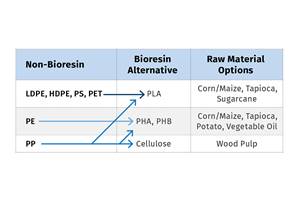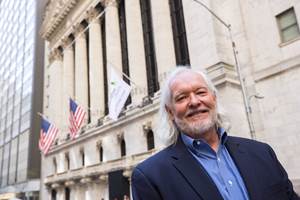Mussels Inspire New Plastic
It can stretch without snapping and repair its own molecular bonds.
Nature’s inspiration for the development of new materials appears to never cease. Earlier this year, I reported on the continued evolution of biodegradable bioplastics, including those sourced or inspired by cassava root, proprietary starch formulations and natural fibers, as well as shrimp shells.
The shrimp development refers to man-made bioplastic chitosan being derived from the organic compound chitin, which extracted from shrimp shells, for the production of biodegradable shopping bags, as well as next-generation food packaging. Now mollusks have joined the ‘seafood’ crowd.
Mussels, in particular, have been the focus of research conducted by Megan Valentine, associate professor of mechanical engineering, at the University of California, Santa Barbara (UCSB), leading them to create a plastic that can stretch without snapping and repair its own molecular bonds, so it has potential for use in robot joints that lift heavy objects, or for packaging to protect delicate cargo from accidental falls.
Like other mollusks, mussels hang onto solid surfaces using an adhesive protein and tough fibers, which are extremely strong and can repair themselves when a few molecular bonds within them are broken. For a mussel, these stretchy yet strong fibers come in handy when a wave hits.
Valentine and her team created a plastic with the same properties as mussels by mimicking the chemistry the mussels use. Molecular bonds between iron and an organic compound called catechol make the material difficult to break or tear, while still allowing it to remain stretchy. The iron-catechol bonds dissipate energy from something hitting or stretching the material.
These “sacrificial bonds” break, but the overall structure stays intact, according to the researchers. Said Valentine, “It’s like a bike helmet: if you’re in a bike accident, the foam inside the helmet crushes and dissipates some of the energy. All that energy that would have gone into a skull fracture, instead goes into the helmet….In our case, instead of foam, we have this sacrificial bonding that protects the underlying polymer system.”
It is the iron-catechol bonds “sacrifice” that results in a material that can be stretched by 50%. Then, once the stress is removed, the bonds reform, making it reusable. Adding these bonds results in the plastic being 770 times stretchier and 58 times stronger than it is without them.
Noted Niels Holten-Andersen, associate professor of material science & engineering at the Massachusetts Institute of Technology (MIT), “Typically, there’s a trade-off: you can make a material harder to break but less stretchy, or easier to break and easier to stretch….But, by adding these mussel-inspired bonds, they’ve made it so that you don’t have to make that choice. A material that is both strong and stretchy could act as a shock absorber in packaging from fragile objects or be used to make body armor that repairs itself on a molecular level after taking a hit,” he added.
Valentine said the material could both find application in the joints of robotic arms that need to bear heavy weights while moving around, and potentially could be used to repair tendons in our joints.
Related Content
How to Optimize Your Molds and Hot Runners for Processing Bioresins
Demand for bioresins is growing in molded goods, particularly as a sustainability play to replace fossil-fuel based materials, but these materials are not a drop-in replacement for traditional materials. Molds and hot runners need to be optimized for these materials.
Read MoreICIS Launches: Ask ICIS Generative AI Commodities Assistant
Said to be the first of its kind, this AI assistant will enhance access to ICIS’ intelligence and insights for the energy and chemical markets.
Read MoreHonda Now Exploring UBQ’s Biobased Material Made from Unsorted Household Waste
UBQ is aiming to expand its reach for more sustainable automotive parts as well as non-automotive applications.
Read MoreWhy Are They Blending Biopolymers?
A sit-down with bioplastic producer Danimer Scientific showed me there are more possible answers to that question than I had previously thought.
Read MoreRead Next
See Recyclers Close the Loop on Trade Show Production Scrap at NPE2024
A collaboration between show organizer PLASTICS, recycler CPR and size reduction experts WEIMA and Conair recovered and recycled all production scrap at NPE2024.
Read MoreMaking the Circular Economy a Reality
Driven by brand owner demands and new worldwide legislation, the entire supply chain is working toward the shift to circularity, with some evidence the circular economy has already begun.
Read MorePeople 4.0 – How to Get Buy-In from Your Staff for Industry 4.0 Systems
Implementing a production monitoring system as the foundation of a ‘smart factory’ is about integrating people with new technology as much as it is about integrating machines and computers. Here are tips from a company that has gone through the process.
Read More


























